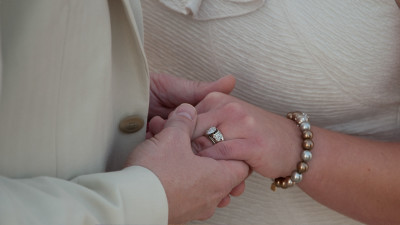Electrical brain stimulation may ease sadness after a breakup

Breaking up with a lover is serious, and the trauma caused by a breakup has a unique diagnostic name called '
Targeting the left DLPFC and right VLPFC in unmarried romantic relationship breakup (love trauma syndrome) with intensified electrical stimulation: A randomized, single-blind, parallel-group, sham-controlled study - ScienceDirect
https://www.sciencedirect.com/science/article/abs/pii/S0022395624002796

Electrical brain stimulation can ease heartbreak, study finds | Neuroscience | The Guardian
Previous studies have shown that LTS can cause psychological distress, depression, anxiety, insomnia, mood swings, obsessive thoughts, increased risk of suicide, feelings of helplessness and guilt.
The research team fitted 36 LTS patients with a transcranial direct current stimulation (tDCS) device, which can deliver electrical stimulation to specific areas of the brain. The subjects were divided into three groups: one group that received stimulation of the dorsolateral prefrontal cortex (DLPFC), one group that received stimulation of the ventrolateral prefrontal cortex (vl-PFC), and one group that wore the device but did not receive stimulation. They were asked to wear the device for 20 minutes twice a day for a total of five days.

The study revealed that stimulation of the dorsolateral prefrontal cortex was more effective than stimulation of the ventrolateral prefrontal cortex for treating LTS symptoms. The research team reported, 'Stimulation of the dorsolateral prefrontal cortex or ventrolateral prefrontal cortex significantly reduced LTS symptoms and improved depression and anxiety after intervention compared to no stimulation. Furthermore, the improvement effect of stimulation of the dorsolateral prefrontal cortex on LTS was significantly greater than the effect of stimulation of the VLPFC.'
The research team also revealed that the therapeutic effect continued even one month after the end of the experiment, and stated, 'The results of this experiment need to be replicated in a larger scale study.'

Regarding this experiment, the research team argued, 'When emotional dysregulation occurs after heartbreak, negative emotions become dominant. Therefore, the main treatment goal for LTS is to improve emotion regulation. Although there are effective treatment approaches such as cognitive behavioral therapy, these therapies are not effective for all patients. Therefore, innovative and complementary treatment approaches such as electrical stimulation are invaluable.'
Related Posts:
in Science, , Posted by log1r_ut







